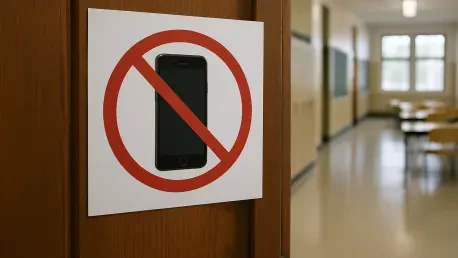In an era where digital devices dominate daily life, a growing number of educators and administrators in West Michigan are taking bold steps to curb their influence within school walls, aiming to sharpen student focus and elevate academic outcomes. Schools in the region, particularly in Lakeview School District in Battle Creek and Mattawan Consolidated Schools, have rolled out stringent cell phone bans as part of a broader effort to minimize distractions during the school day. These policies, newly implemented or expanded for the current academic year, reflect mounting concerns about the detrimental effects of smartphones on student engagement, social interactions, and learning environments. By prioritizing in-person connections over digital ones, these districts are testing whether limiting device access can foster a more productive atmosphere. This development raises critical questions about the balance between technology and education, and whether such restrictions can truly enhance concentration in classrooms.
Tackling Distractions with Strict Policies
Lakeview School District has adopted a comprehensive bell-to-bell cell phone ban that spans all grade levels, from kindergarten through 12th grade, marking a significant shift in policy to address distractions head-on. Under this rule, students are prohibited from using cell phones or other electronic devices during classroom hours, in hallways, or even during lunch breaks. Previously limited to younger grades, the expansion to middle and high school students is grounded in research showing that reduced device usage correlates with fewer interruptions and a stronger focus on learning. Administrators have acknowledged that adapting to this change might be challenging for some families, yet they stress the importance of community support to create an environment conducive to education. The district’s firm stance underscores a belief that minimizing digital interference is essential for maintaining an optimal setting for both teaching and student growth, setting a precedent for other schools in the region to consider similar measures.
In a parallel move, Mattawan Consolidated Schools has introduced tighter restrictions on cell phone use, though their approach allows for slightly more flexibility compared to Lakeview’s sweeping ban. At Mattawan High School, students must place their devices in designated pouches or caddies at the front of each classroom during lessons, with access permitted only between classes, during lunch, or in emergencies. Building on earlier policies, this updated rule emphasizes consistent enforcement to ensure fairness across the board. Superintendent Randy Fleenor has highlighted the goal of curbing issues tied to social media while promoting traditional student-teacher interactions and deeper engagement with academic material. Principal Kris Simms has also pointed to feedback from students and staff, which suggests that uniform application of the policy helps alleviate concerns about missing out and boosts overall productivity. This tailored strategy reflects an effort to balance student needs with educational priorities in a digital age.
Balancing Student Needs and Educational Goals
Both Lakeview and Mattawan districts share a common understanding that cell phones often hinder student focus, a perspective supported by local observations and broader research into technology’s impact on learning. The policies, while differing in their specifics, are united by the aim of fostering a distraction-free environment where in-person engagement takes precedence over digital connectivity. By limiting access to devices during instructional time, these schools are part of a larger trend among educational institutions to reevaluate the role of technology in classrooms. The shared objective is to create a space where students can concentrate on lessons without the constant pull of notifications or social media. This movement signals a growing recognition that while smartphones are integral to modern life, their unchecked presence in schools can undermine the very purpose of education, prompting administrators to seek innovative ways to manage their influence effectively.
Mattawan’s approach also incorporates student perspectives, addressing concerns such as the fear of missing out, commonly known as FOMO, which can exacerbate anxiety when device use is restricted. By ensuring consistent enforcement, the district aims to create a sense of fairness and acceptance among students, making the transition to limited phone access smoother. Meanwhile, Lakeview positions its stricter policy as a necessary adjustment, urging families to support the initiative for the sake of academic improvement. These varied methods highlight the diverse ways schools navigate the challenge of balancing student well-being with educational objectives. Despite the differences, both districts converge on the belief that reducing cell phone use during school hours can lead to tangible benefits, including enhanced academic performance and stronger interpersonal connections among students, setting the stage for long-term positive outcomes in their learning journeys.
Reflecting on the Impact of Digital Boundaries
Looking back, the proactive steps taken by West Michigan schools like Lakeview and Mattawan to implement cell phone bans demonstrate a clear commitment to addressing the challenges posed by digital distractions in educational settings. The comprehensive restrictions in Lakeview and the classroom-specific measures in Mattawan both seek to enhance student focus and engagement, drawing on research and community input to shape their approaches. Moving forward, it will be crucial for other districts to monitor the outcomes of these policies, assessing whether they indeed result in measurable improvements in academic performance and classroom dynamics. Schools might also consider integrating digital literacy programs to teach students how to use technology responsibly outside of restricted hours. As education continues to evolve in a tech-driven world, sharing best practices and adapting strategies based on real-world results will be essential to ensure that students thrive in environments that prioritize learning over digital dependency.









